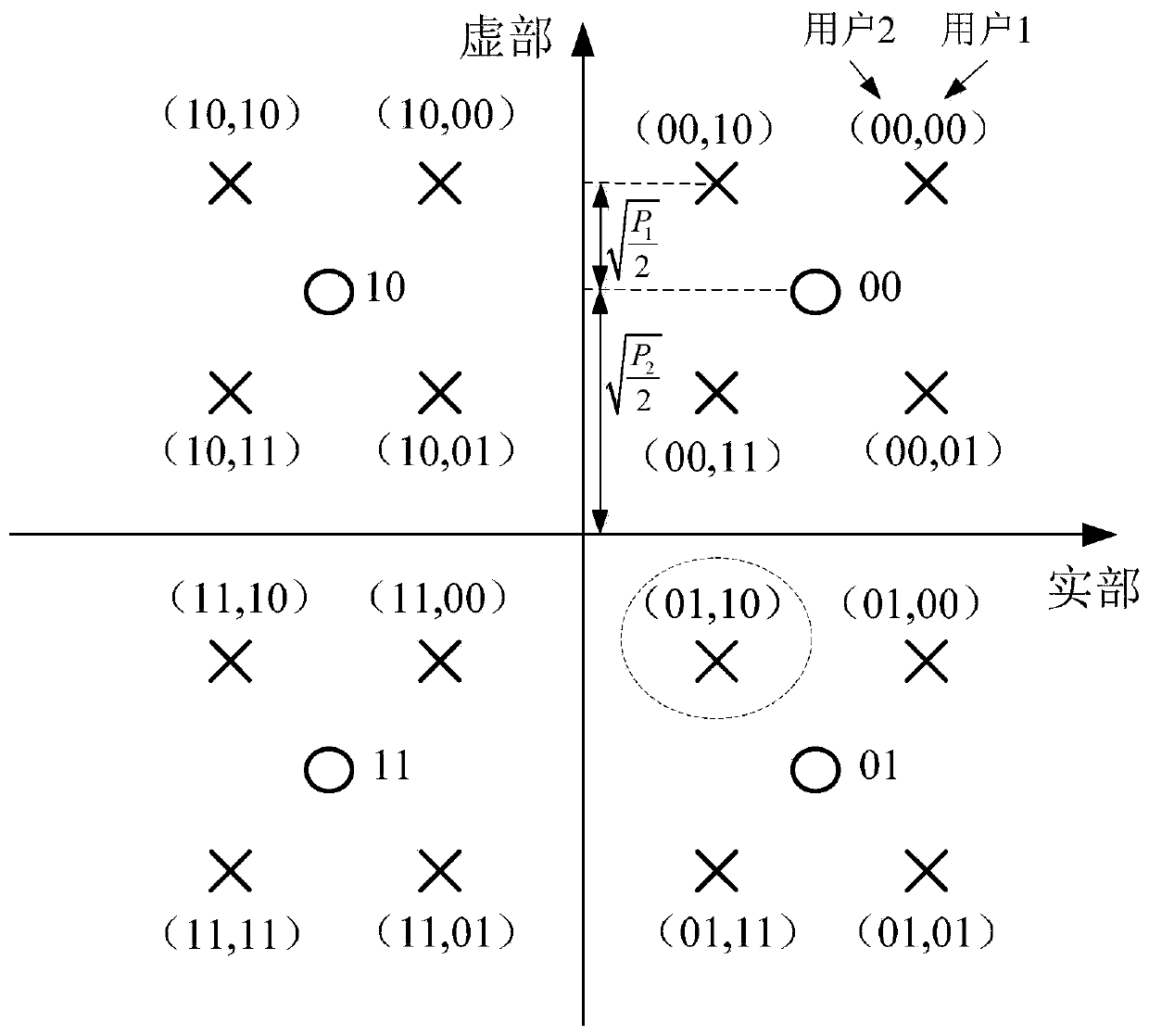Downlink sending method suitable for non-orthogonal multiple access system
A non-orthogonal multiple access, access system technology, applied in the field of downlink transmission, can solve problems such as system performance degradation, instantaneous power fluctuation, and system complexity increase, and achieve the effect of reducing the bit error rate
- Summary
- Abstract
- Description
- Claims
- Application Information
AI Technical Summary
Problems solved by technology
Method used
Image
Examples
Embodiment Construction
[0038] The technical solutions of the present invention will be further described below in conjunction with the accompanying drawings and embodiments.
[0039] Consider a NOMA system where the base station serves two users simultaneously using the same physical resource, such as time. Assuming that the transmitted signal experiences a flat fading channel, the channel parameter of user 1 is h 1 , the channel parameter of user 2 is h 2 , and remains unchanged during user transmission. Assuming that user 2 is farther from the base station than user 1, then |h 1 | 2 >|h 2 | 2 . According to the channel parameters fed back by users, the base station allocates power P 1 To user 1, allocate power P 2 to user 2, and P 1 2 , resulting in a send signal that looks like this:
[0040]
[0041] Among them, X 1 (n) and X 2 (n) respectively represent the data sent by the base station to user 1 and user 2 at the nth moment, which are modulated by BPSK or QPSK.
[0042] It can ...
PUM
 Login to View More
Login to View More Abstract
Description
Claims
Application Information
 Login to View More
Login to View More - R&D
- Intellectual Property
- Life Sciences
- Materials
- Tech Scout
- Unparalleled Data Quality
- Higher Quality Content
- 60% Fewer Hallucinations
Browse by: Latest US Patents, China's latest patents, Technical Efficacy Thesaurus, Application Domain, Technology Topic, Popular Technical Reports.
© 2025 PatSnap. All rights reserved.Legal|Privacy policy|Modern Slavery Act Transparency Statement|Sitemap|About US| Contact US: help@patsnap.com



